By Eric Vandenbroeck
and co-workers
Moscow’s new strategy in Ukraine is just
as bad as the old one
Last week, Russian
President Vladimir Putin announced a partial
mobilization to shore up his faltering war against Ukraine. However, the
pretense that there is anything partial about this move is about as convincing
as Putin’s claim that Russia is merely carrying out a “special military
operation” in Ukraine. After Putin’s announcement, Defense Minister Sergei
Shoigu said that 300,000 men with military backgrounds would be drafted. But
some reports indicate that is not the number stated in official documents
authorizing the mobilization. The parts of Putin’s decree that were made public
do not include any restrictions on the Defense Ministry’s authorization to
draft people. According to some reports, as many as one million men might be
conscripted, and some military commissariats already appear to be drafting men
indiscriminately.
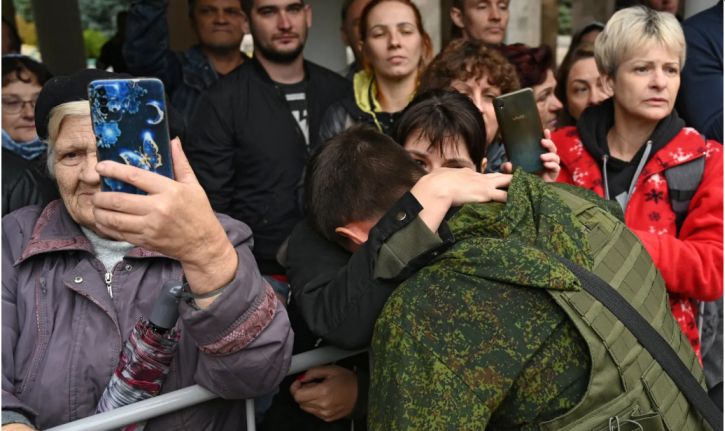
The conscription represents
a dramatic turning point in the war and Putin’s rule. The Kremlin expected the
war to be. When it did not end quickly, Putin found a way of waging it
consistent with his political style since coming to power in 2000. The few
Russians thrilled with the war’s imperial promises
could wave the flag and display the letter “z,” the official symbol of the war.
Those apprehensive or disturbed by the war could quietly harbor their
uncertainties. Those voicing discontent in public were invariably punished: thousands
were arrested for marching or holding signs that read, among other
things, net vojne (“no to war”) or
the phrase dva slova—“two
words,” a euphemism for net vojne. Nobody
could come out against the government or give voice to their dissent in the public
sphere. Any organizing against the war was strictly prohibited, and violators
were harshly punished.
The First Department
human rights organization claims that mobilized Russians are being taken to the
front without training. In a video that came into First Division’s
possession, a mobilized Russian man talks about being sent to Kherson:
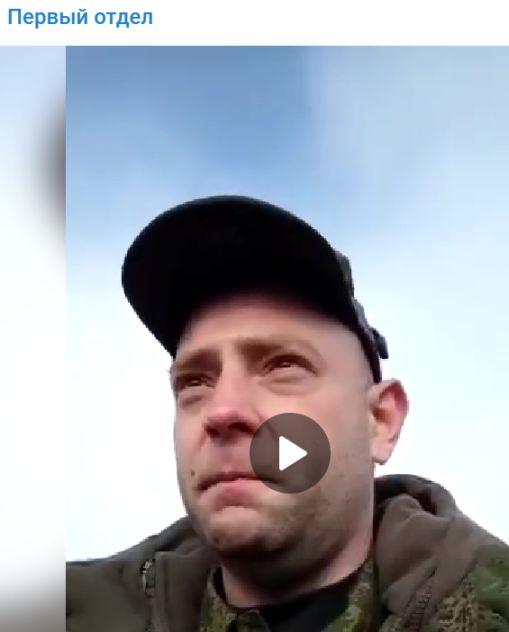
This response was not
fascism, despite the common application of that term to describe Putin’s rule.
Instead, the preservation of an atomized and compliant society was securely
apolitical and would not disrupt the Kremlin’s actions. The war had to remain
far away for this atomization to stay in effect. It had to be a mutable abstraction onto which Russians’
subjective attitudes could be projected, whether they were pro-war or antiwar.
Polling data suggest that, before the mobilization, the war retained the
support of more than 75 percent of Russians. Such acquiescence was the best
possible public response from the Kremlin’s point of view. Indifference was a
close second.
But the war did not go as planned, and Putin has run out of
options. Were Putin to pull back, Ukraine would grow in military strength and
further integrate into European and transatlantic institutions. This would make
the war counterproductive and therefore unacceptable to Putin; it would be a
Russian defeat. At the same time, Russia cannot win the war with its current
instruments. That was demonstrated in
September, when Ukrainian forces retook immense
territory. Russia’s military is exhausted, and it is too small to hold all
the land it has taken since February. Without an alteration in the status quo,
Ukraine will likely go on to make further gains, perhaps even moving on to
Crimea, the territory Russia annexed in 2014 and intimately bound up with
Putin’s legacy.
Russia has had
many in Ukraine, but it is not a defeated country. It has the wealth,
population, and industrial capacity to keep the war going—but only if it
mobilizes. It bears emphasis that calling for mobilization is much simpler than
carrying it out, something Russia has not done for decades. Even if the
military can master the logistics—and the experience of the first days suggests
that the likelihood of this is slim—mobilization will be only as good as the
strategy behind it. Mobilization for a losing strategy will create more
problems for Putin than it will solve. It could even undermine Putin’s ability
to govern.
This satellite image
provided by Maxar Technologies on Sept. 26, 2022, shows an overview of the
traffic jam near the Russia border with Georgia on Sept. 25, 2022:
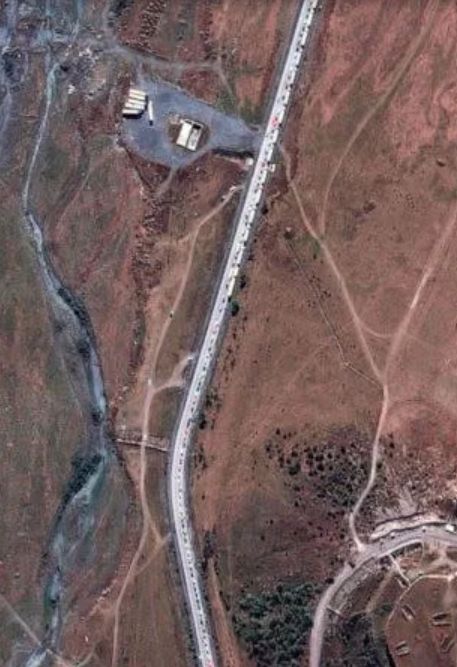
At the very least, mobilization
will bring politics back to Russia. It will eat away at the public indifference
that has long been crucial to Putinism. Already,
Russia has witnessed a wave of protests in response to Putin’s announcement
last week, and vast numbers of draft-eligible Russians rushed to the borders
immediately after Putin announced the plan. Political pressure will come to the
Kremlin not just from opponents of the war but also from those dismayed by the
military’s startling incompetence and seeming lack of determination. The first
group has almost no political power. The second, however, has the potential to
coalesce into a challenge to Putin. In the past week, some of the most ardent
supporters of Putin and the war have expressed concern that the mobilization campaign
seems poorly planned.
To steer clear of
that risk to Putin’s power and the threat of large-scale resistance, the
Kremlin will have to repress the Russian population much more than it has
previously done. According to reports, 2,300 antiwar
protesters were detained across Russia five days after the mobilization was
announced. But repression can take on a chaotic momentum of its own. It can
generate disgust and outrage. Augmenting repression amid a chaotic mobilization
has already caused unrest in some places, including burning mobilization
points. Such incidents could multiply and become difficult for the Russian
government to manage.
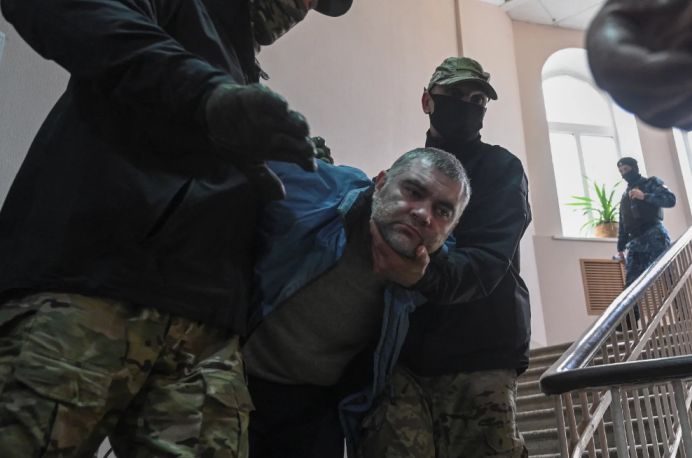
Rather than expecting
a revolution or a palace coup, the world should gird itself for a long war
in Ukraine. Repression will not necessarily speed up or streamline the
mobilization, but it will keep the streets quiet and allow Putin to continue
his aggression.
The war comes home
Putin’s decision to invade in February startled much of the
Russian population. There had been a months-long buildup of forces in border
regions, and by January, something was clearly in the works. Yet it was not as
if a majority or even a vocal cross-section of Russians wanted their country to
wage war against a neighbor with no intention of attacking Russia. The war was
not willed from below. It was hardly unpopular, however.
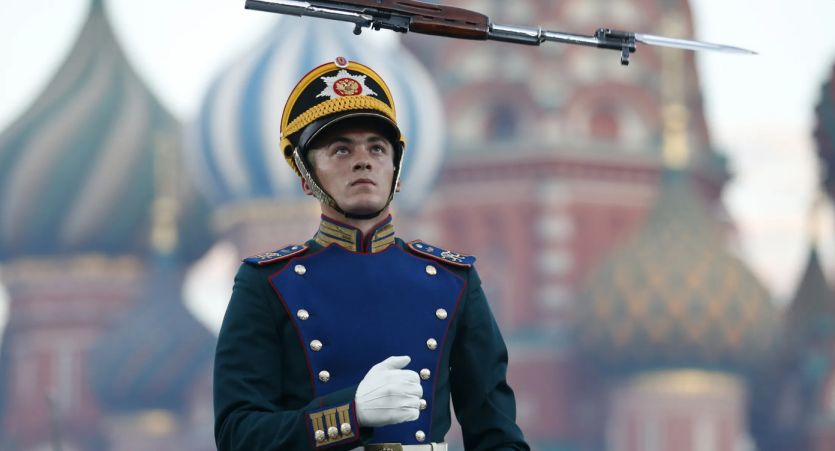
The war serves the
primary foreign-policy goal that Putin has pursued for more than two
decades: the assertion of Russian sovereignty (as he sees it), especially in
the territories of the former Soviet Union. And none of those territories is
more pivotal than Ukraine. Russian sovereignty does not necessarily imply
military action or the colonization of Ukraine. But it does require keeping
Ukraine in Russia’s sphere of influence. Russia would like to write the
rules in Ukraine, preferably from a distance, as
Moscow tried to do before the Maidan Revolution of 2013–14. One way or another,
Russia wants to be the decisive voice on Ukrainian matters that Putin deems
essential for Russia.
To the extent that
the 2022 war is popular, it is popular as an expression of Russian
sovereignty. Supporters see it as a defensive war against a hostile West that
had come up to Russia’s borders, threatening to destroy it. They also see it as
a war against “Nazi” Ukrainian nationalist forces
menacing Russian speakers in Ukraine. Such convictions have not been confined
to the far right or to extreme nationalists in Russia; they are widespread.
According to this view, the West had overstepped in Ukraine. It had ignored
Russian interests. The United States, in particular, had damaged Russian pride
by allocating to itself such a large role in Ukraine: Washington was not
content to dominate most of Europe, it seemed; it had to dominate all of
Europe. This alleged American excess allowed the Kremlin to cast the war in
Ukraine as a good war. For the first seven months, the Kremlin mostly asked
Russians to support their country in the war, and most Russians obliged. That was sufficient.
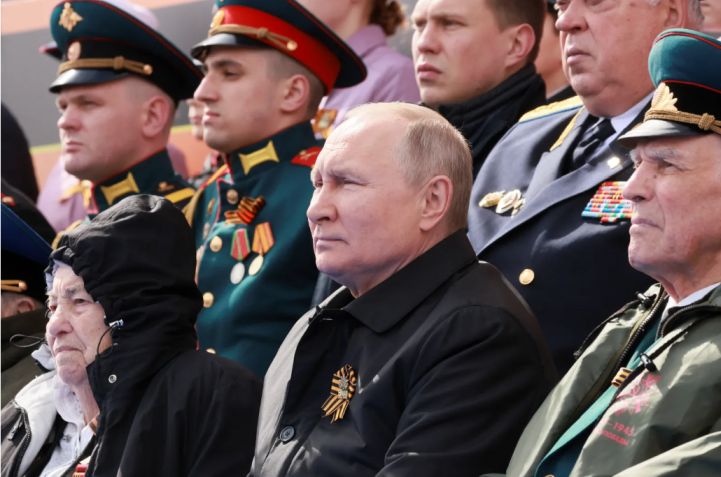
And, unlike in Soviet times, there is—for now—a
release valve for any dissent: the possibility of leaving Russia. Several
hundred thousand Russians did exactly that in the wake of the invasion. Taking
their antiwar sentiments with them, they departed Russia for professional,
moral and for fear of what the war might do to Russia. Those who left were
almost all educated professionals from urban
centers. They had the resources to leave: money, skills, and foreign contacts.
Some of them eventually had to return because they found themselves jobless and
broke.
Outside
of Russia, they could say and write what they wanted. They could be vociferously
against the war. By having left, however, they were no longer a political
presence in Russia. The Kremlin could easily dismiss their criticisms as
unpatriotic. It was an elegant solution to the problem of the war’s popularity.
The Kremlin did not have to manufacture consent so much as it had to curate it.
Dissent was punished—but would-be dissenters could simply absent themselves.
Putin’s coup de grâce was the barrier he built between the war and everyday
life. For most Russians, the war in Ukraine remained an abstraction, akin to a
reality TV show. Over the summer, most Russians could continue enjoying good
weather and civilian life routines. The perfect illustration of this dynamic
was the celebration of “city day” in Moscow on September 10, which occurred as
it might have in peacetime. And why not? Moscow was at peace. Why not have a
good time? Putin appeared in public, opening an enormous Ferris wheel, the
largest in Europe, to
enjoy Muscovites. But the war violated the terms of this soothing narrative.
As Putin smiled and Moscow celebrated, Russian forces suffered a massive and
humiliating defeat around Kharkiv in Ukraine. (And the Ferris wheel broke down
almost as soon as it began operating.)
Enemies within?
Putin now faces a
punishing timeline. He cannot win the war quickly and may be incapable of
winning it. He may be able to maneuver toward an outcome he and his country can
accept, but that might be a multiyear project.
For ordinary Russians, that time will be marked by pain, loss, and suffering.
The war will smother the pleasures of peace. Wars of choice are especially
prone to diminishing public enthusiasm. In this regard, Putin might benefit
from studying the history of the Soviet war in Afghanistan. It alone did not
cause the Soviet Union to fall, but as more and more families saw their sons
returned in body bags, the awareness of the losses stoked discontent. The war
sapped the government’s legitimacy. Together with many other
catalysts, it precipitated the fall of the Soviet Union.
Mobilization will
make the domestic landscape vastly more difficult for Putin to navigate. He has
fought many wars as Russia’s president but has never been a wartime president.
He will have to coerce hundreds of thousands of young men into uniform. The
general morale problems associated with conscripts will intersect with the
specific moral issues the Russian military faces in Ukraine: slipshod
organization, poor performance, heavy losses, and
exhaustion.
Putin will also have
to mobilize public opinion. Russians will no longer be permitted to keep their
distance from the state, granting it impunity and receiving privacy in return.
Putin has breached the terms of his bargain with the people. They will be
required to display their enthusiasm for the war. Government projects will be
incentivizing support for the war and disincentivize opposition to it. The
Kremlin will not approach that task with a light touch, and it will put Putin’s
ideological bona fides to the test. The ingredients that have made up Russian
political culture during the Putin era—a complex blend of Soviet, post-Soviet,
imperial Russian, and modern Russian elements—will have to be replaced by a
cruder, more overt Russian jingoism. Meanwhile, growing numbers will
try to flee the country, bribe their way out of military services, or
desert the military.
Mobilization will
entail clamping down on emigration. Before the end of September, the
borders will likely close to those eligible for the
draft. Antiwar Russians, and those who previously thought they could
ignore the war, will be stuck at home. The government will use threats or
violence to compel their silence. A nervous government will have to contend
with the possibly combustible, though disorganized, the force of protest. The
Kremlin might also have to open up other fronts of repression directed at the
nationalist circles that for months have been calling for mobilization and
that can be appeased only by battlefield victories, which mobilization may not
deliver. Some of these warmongers are prominent political figures; Putin may
have to repress not only street protests and opposition movements but also
cadres who might be ready to contemplate sidelining him.
No turning back
Engineering a
workable outcome in Ukraine is probably beyond Putin’s grasp. The Ukrainian military
is too strong for the government in Kyiv to make concessions to Moscow, even if
it wanted to negotiate an end to the fighting. The war has been too brutal for
Ukrainians to forgive and forget.
Yet Putin will also
not back down. He will seek ways to prolong the war, which is by no means
impossible for him. Mobilization will allow him to cycle new soldiers into the
fight and perhaps to mount surprise attacks. He can defer the worst
consequences of a disastrous war, even though a disorganized mobilization may
burden the Russian military. The longer the war, the more likely it becomes
that economic collapse in Ukraine or political upheaval in Europe or the United States
might open opportunities for Russia. It is a grim and, in many ways, a
low-probability strategy, but it is a strategy proportional to Russia’s
capabilities.
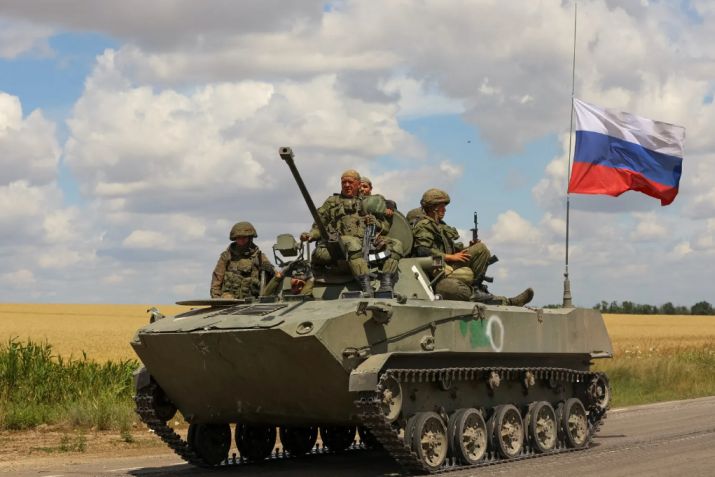
Precipitously
stepping up repression is hard for authoritarian regimes. There exists a
mysterious point at which increased repression generates increased unrest and
an unknowable point at which revolution begins. However, Putin is a student of
Russian history and understands that the Russian tendency to revolution comes
not when the state wields power but when it yields power. Tsar Nicholas II
abdicated during World War I after launching a war of choice against Japan that
weakened the Russian empire. The Provisional Government that followed did not
have the cohesion or the will to subdue the Bolshevik Revolution. The Soviet
leader Mikhail Gorbachev would be the more vivid example to Putin. Gorbachev
did not deny Soviet backwardness. He acknowledged certain errors and withdrew
from Afghanistan. He handed agency to the peoples of the Soviet Union through
glasnost and perestroika. But loosening the Communist Party’s
control precipitated a bloodless revolution that toppled the regime. The Soviet
Union lacked the cohesion and the will to keep itself alive. Putin is not going
to make that mistake. He will turn instead to the examples of Tsars Nicholas I
and Alexander III and to the Soviet leaders Joseph Stalin, Nikita Khrushchev,
and Leonid Brezhnev, all of whom were able to suppress dissent at home, keep
their subjects in line, and pursue hard-line policies
without letting the dissent crystallize into meaningful movements.
Putin has available
to him an immense architecture of repression. Numerous media have been serving
as government mouthpieces for the past two decades. And since the beginning of
the war in Ukraine, the remaining nongovernmental outlets have been shut down
or forced out of Russia. Putin came from the security services, as have many of
his colleagues in the Kremlin. He has every resource he needs to transform
Russia into a brutal police state, far more repressive than it is now. That
will win him no sincere support for the war, and it may give him no new
advantage in the war. But it will grant him a means of corralling Russians into
the war effort and severely punishing anyone who stands in his way. In
prosecuting his war in Ukraine, Putin will be relentless. In prosecuting his
battle at home, he will be ruthless.
For updates click hompage here